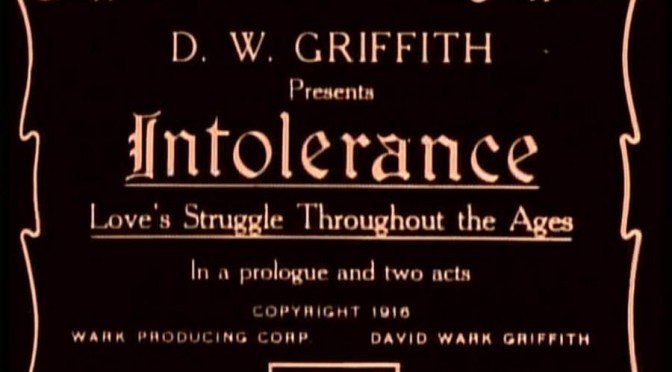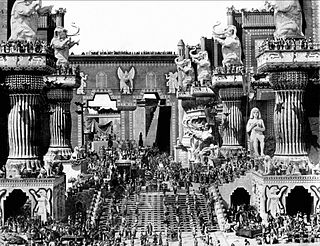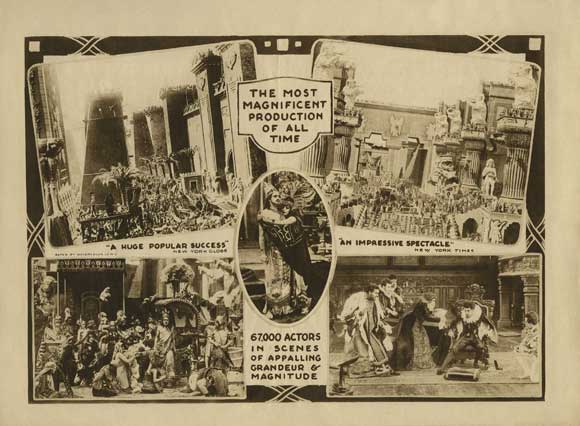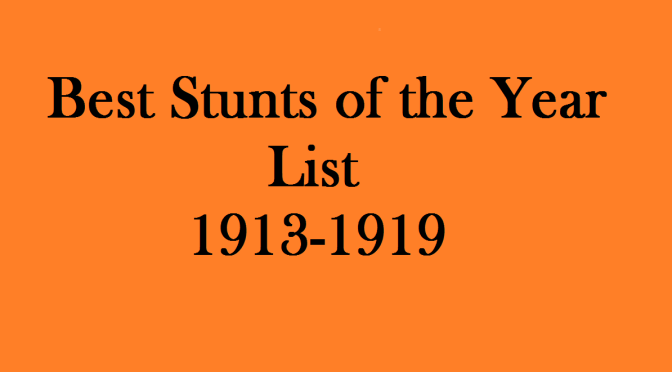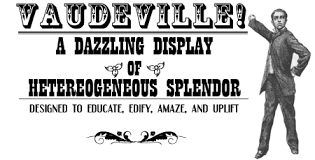Structurally, Intolerance (1916) is as audacious as anything ever attempted on film – four simultaneous stories linked only by a common theme and the generally rising action – with the editing style growing more complex as the action in each story reaches its climax. This four distinct, but parallel, stories, set up moral and psychological connections among them, as they spread out over 2500 years. They consist of an ancient Babylonian story, a Biblical Judean story, a Renaissance French story and a modern American story.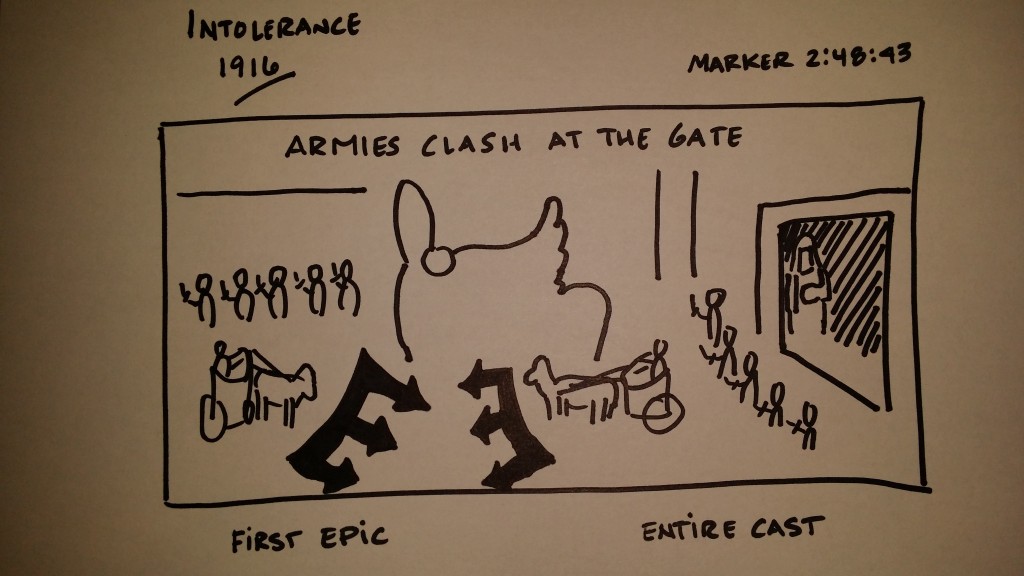 D.W. Griffith is generally thought of having been the first director to create lavish and grande spectacle films, and is considered to have created the motion picture epic. Triangle Film Corporation’s production of Intolerance was a colossal undertaking featuring monumental sets, lavish period costumes, and more than 3,000 extras. Griffith began shooting the film with the Modern Story (originally titled “The Mother and the Law”), whose planning predated The Birth of a Nation, then greatly expanded it to include the other three parallel stories under the theme of intolerance.
D.W. Griffith is generally thought of having been the first director to create lavish and grande spectacle films, and is considered to have created the motion picture epic. Triangle Film Corporation’s production of Intolerance was a colossal undertaking featuring monumental sets, lavish period costumes, and more than 3,000 extras. Griffith began shooting the film with the Modern Story (originally titled “The Mother and the Law”), whose planning predated The Birth of a Nation, then greatly expanded it to include the other three parallel stories under the theme of intolerance.
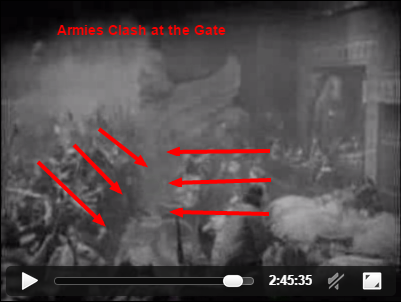 The film’s action sequences were all done by the actors themselves. This far back in the beginning of the film Industry, there were no replacements, the actors themselves being relied on to complete all acting and action needed in front of the camera. It wasn’t until later when someone thought to replace the actor with a person trained and protected specifically for the action. That’s one of the reason’s why so many actors and actresses themselves are earning the Best Stunt Awards so far. It’s virtually impossible to pick out just one stunt in this film as there are so many and the action so grand that the award for 1916 is given to the whole cast. The last 25 minutes of the film, as everything converges, is all action. Josef Von Sternberg, in his memoir “Fun in a Chinese Laundry”, wrote that DW Griffith once said to his assistants during the making of one of his epics, “Move these 10,000 horses a trifle to the right, and that mob out there three feet forward.”
The film’s action sequences were all done by the actors themselves. This far back in the beginning of the film Industry, there were no replacements, the actors themselves being relied on to complete all acting and action needed in front of the camera. It wasn’t until later when someone thought to replace the actor with a person trained and protected specifically for the action. That’s one of the reason’s why so many actors and actresses themselves are earning the Best Stunt Awards so far. It’s virtually impossible to pick out just one stunt in this film as there are so many and the action so grand that the award for 1916 is given to the whole cast. The last 25 minutes of the film, as everything converges, is all action. Josef Von Sternberg, in his memoir “Fun in a Chinese Laundry”, wrote that DW Griffith once said to his assistants during the making of one of his epics, “Move these 10,000 horses a trifle to the right, and that mob out there three feet forward.”
Things to look up (go to IMDB ):
Glossary of film terms as defined by Wikipedia:
- Epic – An epic film is an epic genre that emphasizes human drama on a grand scale. Epics are more ambitious in scope than other film genres, and their ambitious nature helps to differentiate them from similar genres such as the period piece or adventure film. Epic historical films often take a historical or imagined event, or a mythic, legendary, or heroic figure and add an extravagant, spectacular setting and lavish costumes, accompanied by a sweeping musical score, and an ensemble cast of bankable stars, making them among the most expensive of films to produce. Some of the most common subjects of epics are royalty, superheroes, great military leaders, or leading personalities or figures from various periods in world history. Epics tend to focus on events that will affect the lives of many people, such as cataclysmic events, natural disasters, war, or political upheaval.

Epic films are expensive and lavish productions because they generally use on-location filming, authentic period costumes, and action scenes on a massive scale and large casts of characters. Biographical films are often less lavish versions of this genre.
Sometimes referred to as costume dramas, they depict the world of a period setting, often incorporating historical pageantry, specially designed costuming and wardrobes, exotic locales, spectacle, lavish decor and a sweeping visual style. They often transport viewers to other worlds or eras, such as classical antiquity, biblical settings, the Middle Ages, the Victorian era, the American Frontier, or the Gilded Age. Films involving modern battle sequences (war films) are also common settings in the epic film genre, as are westerns, and science fiction films set in space, on earth or other planets, with science fiction-oriented battle scenes on a massive scale or with a futuristic backdrop.
Check out our new Book, 100 Years of the Best Movie Stunts!

